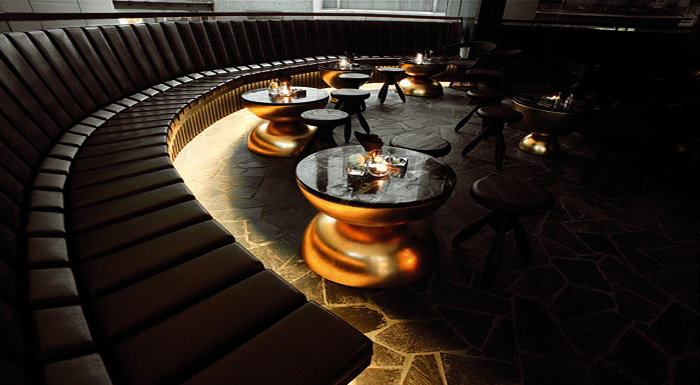Why is it that some spaces look gorgeous and elegant with a
predominance of darker colors while others look drab, cold, too small or
‘too dark’, more than anything else?
There following are several of the key factors to consider when using black or dark colors in designing a space:
1) Size
The space needs to be large enough to augment the dark colors with other design elements. If the room is too small it will feel even smaller with a preponderance of dark colors. Sometimes all that is needed is a dark accent wall to stretch a space and make it feel bigger if the room is small.
The space needs to be large enough to augment the dark colors with other design elements. If the room is too small it will feel even smaller with a preponderance of dark colors. Sometimes all that is needed is a dark accent wall to stretch a space and make it feel bigger if the room is small.
2) Lighting
Lighting is absolutely essential for darker interiors. Cove lighting, chandeliers and glass blown lights are great choices for dark interiors. The right chandelier can add color, warmth and elegance amidst a dark backdrop. If a space is long with a window at one end darker walls will create an even narrower feeling. In this case you would want to put a mirror at one end if possible.
Lighting is absolutely essential for darker interiors. Cove lighting, chandeliers and glass blown lights are great choices for dark interiors. The right chandelier can add color, warmth and elegance amidst a dark backdrop. If a space is long with a window at one end darker walls will create an even narrower feeling. In this case you would want to put a mirror at one end if possible.
3) Organic elements
To warm up a space with darker colors incorporating natural wood, stone, brass, glass or colorful art is key. Glass refracts light and is perhaps one of the reasons the right chandelier looks amazing in dark interiors. A well placed colorful painting can become more of statement on a dark wall.
To warm up a space with darker colors incorporating natural wood, stone, brass, glass or colorful art is key. Glass refracts light and is perhaps one of the reasons the right chandelier looks amazing in dark interiors. A well placed colorful painting can become more of statement on a dark wall.
4) Texture
The textural consistency of a surface or object will affect how the color displays. The rougher the surface, the darker materials will look because they will absorb light and color. On the other hand shiny surfaces will reflect light and create additional luminance. Certain fabrics such as velvet will cast small shadows within themselves and appear darker than silk fabrics of the same color value and hue.
The textural consistency of a surface or object will affect how the color displays. The rougher the surface, the darker materials will look because they will absorb light and color. On the other hand shiny surfaces will reflect light and create additional luminance. Certain fabrics such as velvet will cast small shadows within themselves and appear darker than silk fabrics of the same color value and hue.
In general, the closer in light values two elements are, the lesser
the contrast produced. A dark piece of furniture such as a chair or
table against a lighter background will produce a dramatic effect, but
it will not have as much contrast as a lighter object against a darker
background. This is often why designers will select iconic lighter
pieces in darker interiors.
























0 comments:
Post a Comment
Note: Only a member of this blog may post a comment.